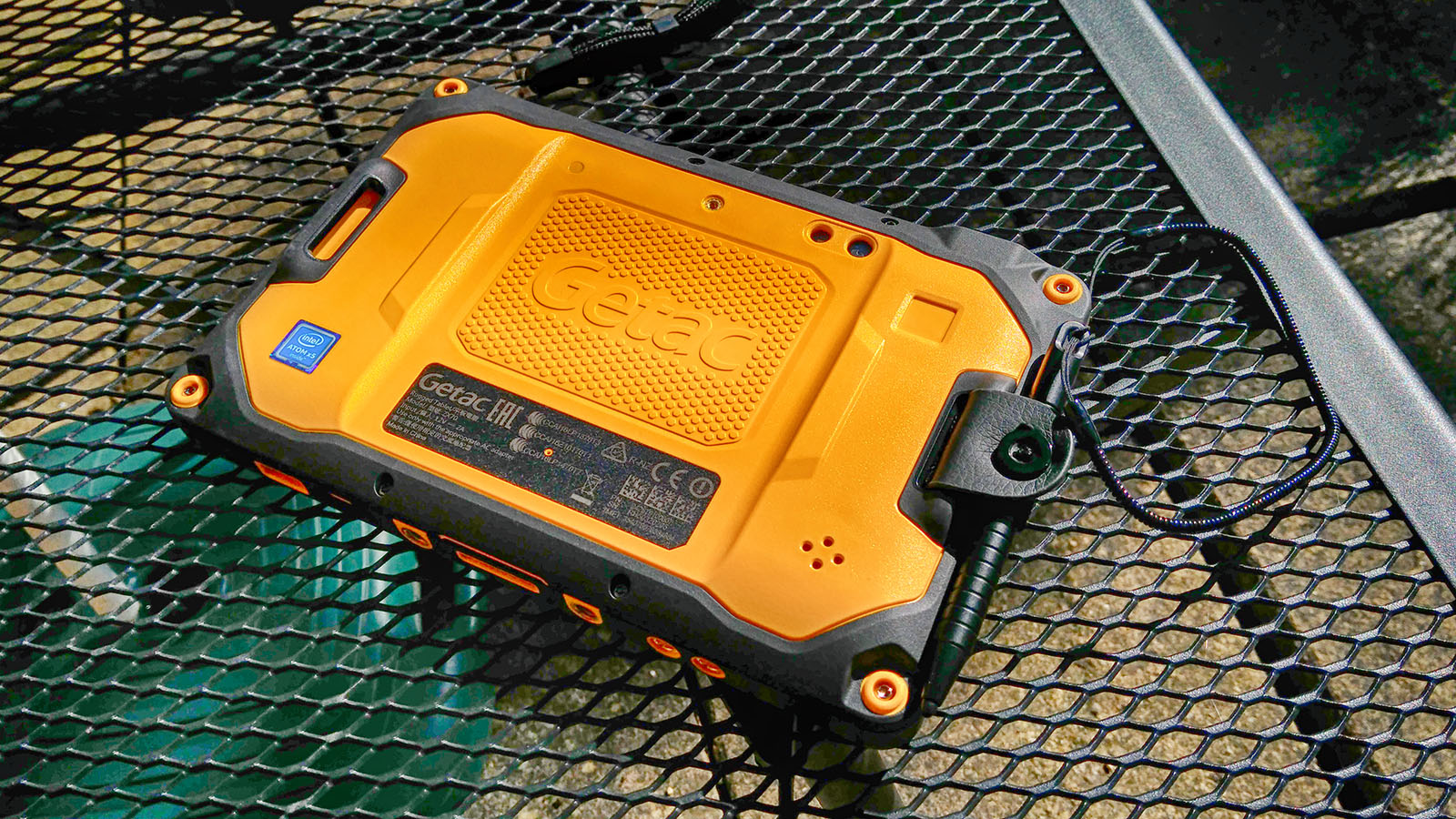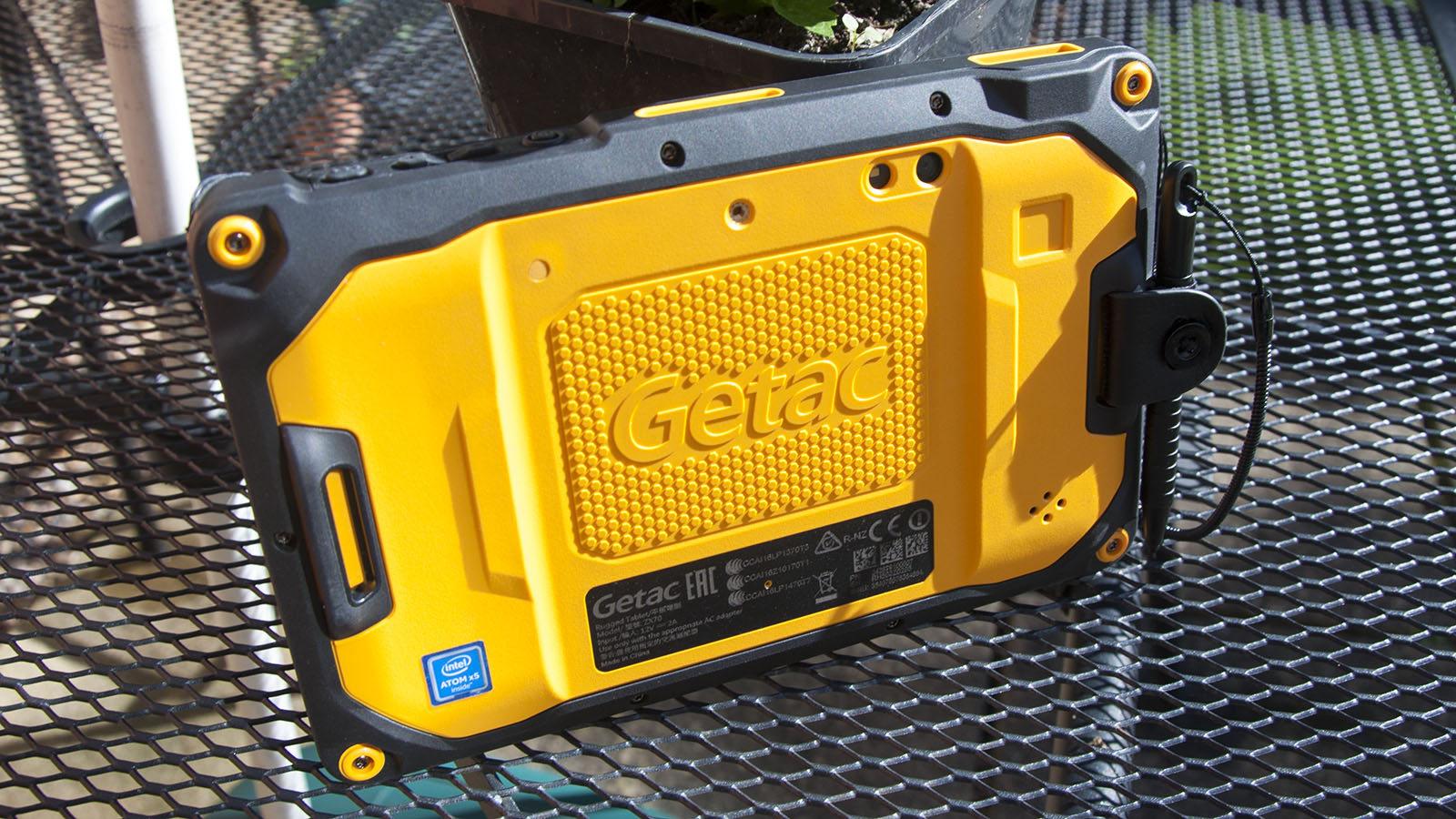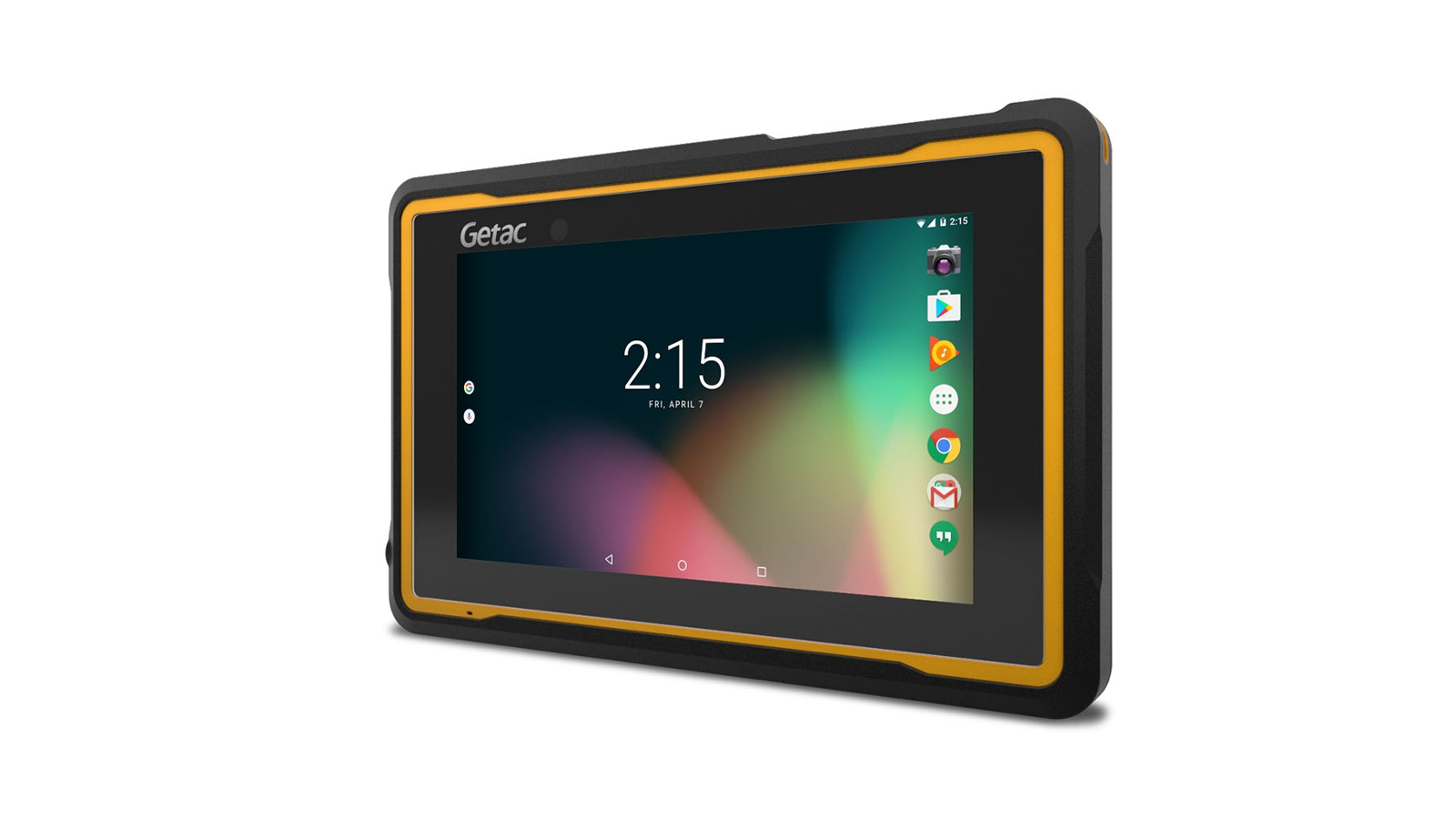TechRadar Verdict
The Getac ZX70 is a very serviceable Android tablet in a tough water and dust-resistant skin. A few minor idiosyncrasies don’t undermine what many field (and warehouse) workers should find a remarkably useful piece of equipment.
Pros
- +
Tough
- +
Great battery life
- +
Useful factory installed options
Cons
- -
Disappointing screen size and resolution
- -
Low-resolution cameras
- -
Proprietary charger
Why you can trust TechRadar
Most tablets don’t last long in a harsh environment. Dust, water, vibration, heat and cold can all reduce their operating lifespan drastically.
Getac has looked to exploit this niche with its latest ZX70 Android tablet, designed to handle environmental extremes that would kill an Apple iPad in just a few minutes.
Depending on what options you take regarding memory and special features the ZX70 can cost more than £1,000 when configured.
A basic model with 2GB of RAM and 32GB of storage is £674 excluding VAT (£809 including VAT), and one with the 4G option is a whopping £794 excluding VAT (£953 inclusive of VAT).
Adding a Barcode Reader, ATEX/IECEx certification, more RAM, more storage or a UHF RFID Reader pushes the cost well above £1,000. Pricing in the US starts at around $1,000, and the tablet can also be found in Australia for less than the local RRP of AU$1,319.
Those prices might seem excessive to the majority of Android customers, but compared with many ruggedized laptops, the ZX70 looks like a bargain. Panasonic’s Toughpad FZ-M1 as an example costs 50% more for the basic model.
For business users outfitting a warehouse, for example, the ZX70 is in the ballpark of what they’d be realistically budgeting for mobile computing devices.

Design
We’re not sure why anything designed to be used outdoors must be brightly colored, but the ZX70’s black textured case with mustard yellow highlights isn’t something you’d easily lose in the snow or a forest.
Designed by Getac to replace its existing Z710 design, the ZX70 has more processing power, a better screen, more RAM and a greater storage capacity than its predecessor.
The majority of 7-inch tablets have an outer skin that’s either plastic or aluminum, whereas this one looks and feels distinctly different.
It’s plastic, probably reinforced with glass fibre, with a rubberized overmold on a magnesium sub-frame. The back is heavily textured and has a slight depression in the centre making it easy to grip with either hand.

To the rear outer edges are two loops that could be used to strap the tablet to a backpack. Or, by default, one provides a location to keep the accompanying stylus while the other mounts a wrist strap.
It’s easier to make selections with the stylus if you’re wearing thick gloves, rather than using direct touch, though the screen is built to work with gloved hands also.
One excellent use of the yellow details is to highlight where all the ports are positioned around the edge, as there are plenty to find.
Along the bottom is a standard USB 2.0 port along with a microUSB connector, the latter being a client port that doesn’t charge the tablet.
Other ports include optional RF antenna pass-through for GPS and WWAN, and a Pogo/JAE docking connector designed to work with peripherals that Getac has produced to support this device.
The DC power socket is located on the left, along with the headphone jack and a screw-held cover that protects both a microSD card and SIM card slots.
The top side has the power and volume controls, and a button to activate the optional laser barcode reader.
It’s functionality over elegance all the way, but not detrimentally so.

Made for abuse
Our first impression of the ZX70 was that it’s designed more for an active lifestyle than being dumped on the lounge sofa. But exactly how tough is it?
According to Getac the ZX70 is certified for both MIL-STD-810G and IP67 standards, making it able to survive a 6-foot drop onto a hard surface and also making it dust and water resistant.
The IP67 certification means that it is water resistant, but not fully waterproof. The MIL-STD-810G tests were designed by the US military to judge the suitability of equipment for service deployment. However, technically no commercial organization or agency certifies compliance with STD-810G. Therefore, while the makers might have designed their products to comply with the requirements of STD-810G, only they judge if any particular device has met them and there are no approved testing methods at this time.
It’s worth noting that some phone products, like the Samsung Galaxy S8, offer IP68 waterproof certification. Though even that device has limits for how deep and how long it can be submerged in water.
Getac claims this device has protection against full immersion down to a depth of 3-foot for 30 minutes, which is better than most Android tablets.
We sank ours in a bowl for 10 minutes, and it suffered no ill consequences. However, it’s worth noting that it ‘sank’. As a result, anyone wanting to take their device on a boating holiday, or similar, should attach a float, we’d strongly suggest.
An ATEX/IECEx certified version of the ZX70 is available as an option, for use in hazardous locations (i.e. one with a potentially explosive atmosphere, like a mine).
However, while this is constructed to survive inherently wet or dusty environments, and to accept a degree of rough handling, that doesn’t make it indestructible.
Mark is an expert on 3D printers, drones and phones. He also covers storage, including SSDs, NAS drives and portable hard drives. He started writing in 1986 and has contributed to MicroMart, PC Format, 3D World, among others.

